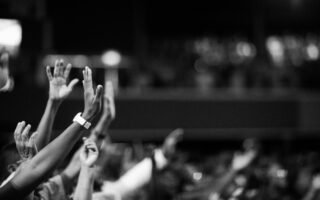Creating a memorable 2D logo requires more than just artistic skill—it demands strategic thinking, understanding of design principles, and careful consideration of brand values. This comprehensive guide will walk you through the process of creating logos that not only look stunning but also effectively communicate your brand’s message.
Introduction to Logo Design
Purpose of a Logo
A logo serves as the visual cornerstone of brand identity, instantly communicating a company’s values, personality, and promise to its audience. It must perform multiple functions:
- Brand identification
- Message communication
- Memory trigger
- Trust building
- Professional representation
Evolution of 2D Logo Design
The journey of logo design has transformed from elaborate Victorian-era emblems to today’s clean, minimal approaches. Modern logos prioritize:
- Digital adaptability
- Cross-platform functionality
- Responsive design
- Visual clarity
Essential Elements of Logo Design
Typography in Logos
Typography choice can make or break a logo design:
- Font personality
- Readability across sizes
- Custom letterforms
- Spacing and kerning
- Weight and contrast
Color Theory
Color selection impacts brand perception through:
- Psychological associations
- Cultural meanings
- Industry standards
- Contrast and visibility
- Reproduction considerations
Shape Psychology
Different shapes evoke various emotional responses:
- Circles: unity, stability
- Squares: reliability, strength
- Triangles: direction, power
- Organic shapes: nature, growth
Space and Balance
Effective use of space involves:
- Positive and negative space
- Visual weight distribution
- Breathing room
- Compositional harmony
Pre-Design Process
Research and Planning
Thorough research includes:
- Industry analysis
- Historical context
- Current trends
- Future predictions
- Success stories
Brand Identity Analysis
Understanding brand elements:
- Core values
- Mission statement
- Brand personality
- Target positioning
- Communication style
Target Audience Understanding
Analyze audience characteristics:
- Demographics
- Preferences
- Behavior patterns
- Cultural context
- Visual literacy
Competitor Analysis
Study competition to:
- Identify gaps
- Avoid similarities
- Find unique angles
- Understand market position
- Track industry trends
Design Principles for 2D Logos
Simplicity and Clarity
Keep designs clean by:
- Eliminating unnecessary elements
- Using clear shapes
- Maintaining visual hierarchy
- Ensuring quick recognition
- Focusing on core message
Scalability
Design for various sizes:
- Favicon size
- Business card scale
- Billboard scale
- Screen resolution
- Print requirements
Versatility
Create adaptable logos for:
- Different backgrounds
- Various contexts
- Multiple platforms
- Different materials
- Color variations
Memorability
Enhance recognition through:
- Unique elements
- Distinctive features
- Strong silhouettes
- Clear concept
- Emotional connection
Step-by-Step Logo Creation
Sketching and Ideation
Begin with:
- Quick thumbnails
- Concept exploration
- Shape studies
- Typography experiments
- Pattern development
Digital Implementation
Transfer to digital format:
- Vector creation
- Shape refinement
- Color application
- Typography adjustment
- Grid alignment
Refinement Process
Perfect the design through:
- Iteration
- Feedback incorporation
- Detail adjustment
- Proportion checking
- Balance verification
Technical Considerations
Software Tools
Popular design tools include:
- Adobe Illustrator
- Affinity Designer
- Sketch
- Figma
- CorelDRAW
File Formats
Prepare various formats:
- AI (source file)
- EPS (vector format)
- PDF (print ready)
- PNG (digital use)
- JPG (web use)
Color Modes
Understand color requirements:
- CMYK for print
- RGB for digital
- Pantone for consistency
- Grayscale version
- Single color version
Common Logo Styles
Wordmarks
Text-based logos featuring:
- Company name
- Custom typography
- Unique letterforms
- Color treatment
- Spacing elements
Lettermarks
Initial-based logos with:
- Abbreviated names
- Monogram styles
- Letter combinations
- Abstract elements
- Geometric shapes
Symbolic Logos
Icon-based designs using:
- Abstract symbols
- Pictorial marks
- Geometric shapes
- Meaningful icons
- Simple illustrations
Testing and Validation
Size Testing
Test logo at:
- Minimum sizes
- Maximum sizes
- Common usage sizes
- Digital platforms
- Print materials
Color Testing
Verify appearance in:
- Full color
- Black and white
- Reversed out
- Different backgrounds
- Various materials
Logo Implementation
Brand Guidelines
Create guidelines for:
- Usage rules
- Clear space
- Size restrictions
- Color specifications
- Placement guidelines
Digital Applications
Prepare for:
- Websites
- Mobile apps
- Social media
- Email signatures
- Digital advertising
Conclusion
Creating an impactful 2D logo requires a perfect blend of creativity, strategy, and technical expertise. Success comes from understanding your brand, following design principles, and maintaining consistency across all applications.
FAQ Section
- How long should the logo design process take?
A professional logo design process typically takes 2-4 weeks, including research, conceptualization, design, and refinement. Complex projects may require more time. - Should I follow current design trends when creating a logo?
While being aware of trends is important, focus on creating timeless designs that will remain relevant for years. Avoid trendy elements that might quickly become dated. - What makes a logo truly memorable?
Memorable logos combine simplicity with uniqueness, clear message communication, and emotional connection. They should be instantly recognizable and meaningful to the target audience. - How many logo concepts should be presented to a client?
Present 3-5 strong, distinct concepts rather than numerous variations. Each concept should be well-thought-out and able to stand on its own merit. - What’s the most important factor in logo design?
While all elements are important, scalability and versatility are crucial. A logo must maintain its impact and legibility across all applications and sizes.



